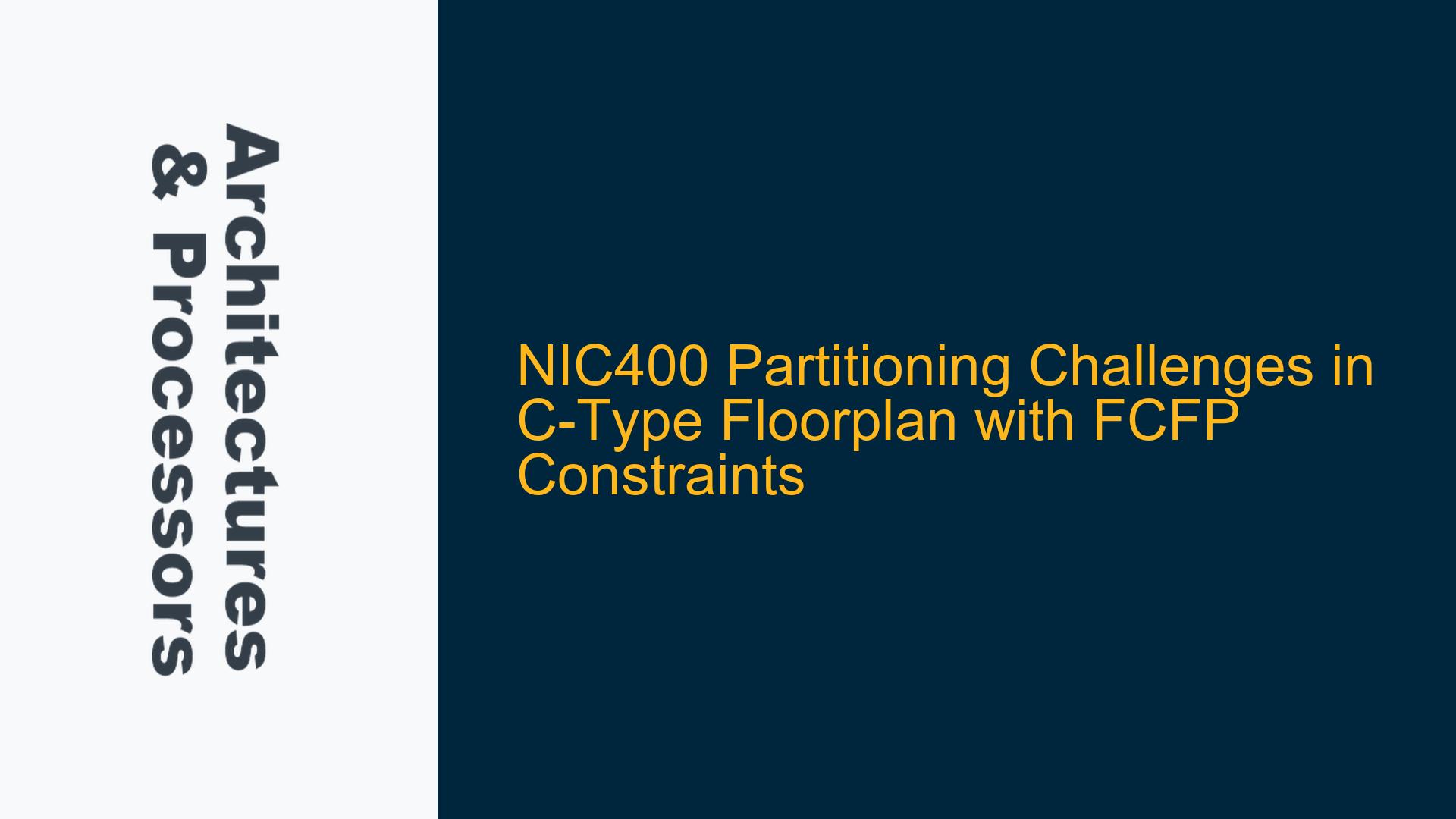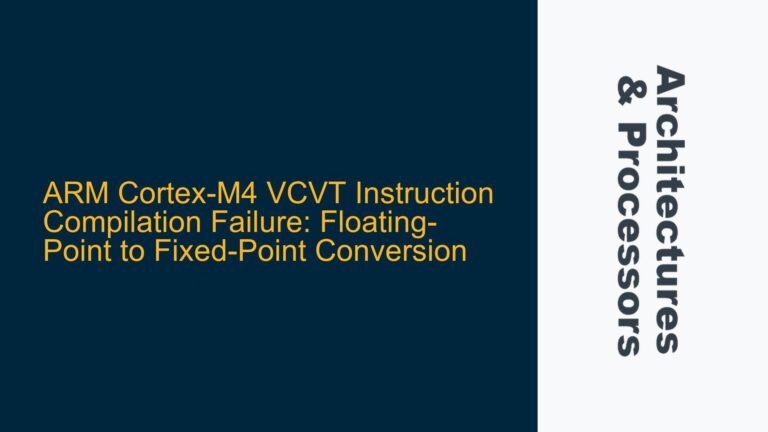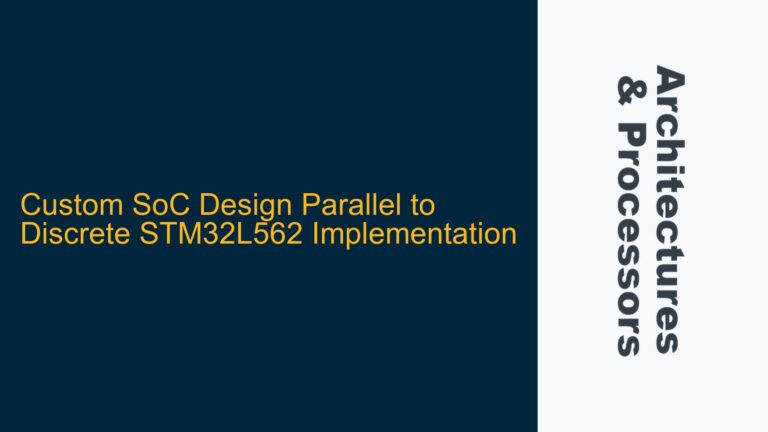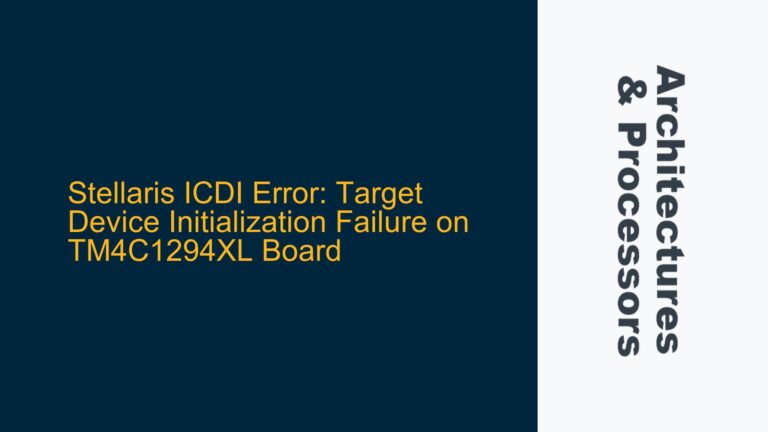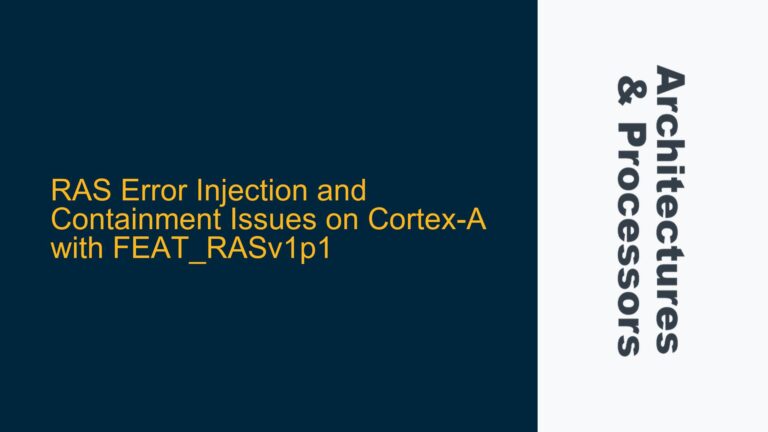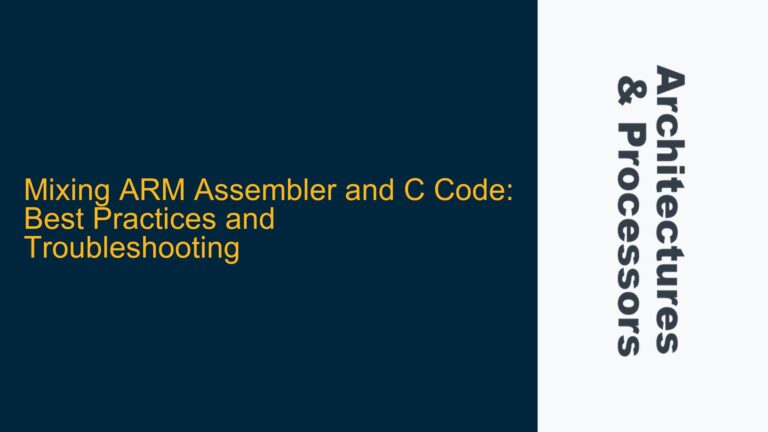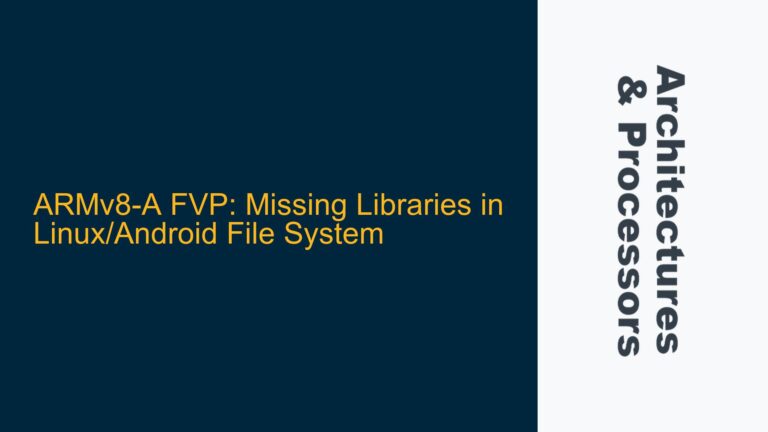NIC400 Partitioning and Clock Domain Synchronization Issues
The NIC400 interconnect is a critical component in ARM-based SoC designs, responsible for managing communication between multiple masters and slaves. In this scenario, the NIC400 is being partitioned into NIC400_top and NIC400_bottom due to floorplan constraints, specifically a C-type floorplan with limited standard cell availability on the left channel. The partitioning introduces several challenges, particularly around clock domain synchronization, deadlock prevention, and AXI protocol compliance.
The NIC400_top and NIC400_bottom partitions are connected via forwarded AXI nets, which must handle asynchronous clock domains for slave 0, slave 1, and slave 3. Additionally, the partitioning must ensure that the 8 master ports, which can be accessed simultaneously by both NIC400_top and NIC400_bottom, do not result in deadlock scenarios. The left side of the floorplan, which is primarily used for routing, further complicates the placement of master ports and standard cells, necessitating careful consideration of timing and area constraints.
The primary concern is whether ARM-Socrates can be used to create two NIC400 instances (NIC400_top and NIC400_bottom) and whether external groups can handle the partitioning. Furthermore, the use of forwarded AXI nets between the two partitions raises questions about deadlock avoidance, especially given the high concurrency of master port accesses.
Clock Domain Crossing and Deadlock Risks in NIC400 Partitioning
The partitioning of NIC400 into NIC400_top and NIC400_bottom introduces several potential causes for clock domain crossing (CDC) issues and deadlock risks. These issues stem from the asynchronous clock domains of slave 0, slave 1, and slave 3, as well as the concurrent access to master ports by both partitions.
Asynchronous Clock Domains
Slave 0, slave 1, and slave 3 operate on different clock domains, which are not synchronized. When NIC400_top and NIC400_bottom communicate via forwarded AXI nets, the lack of synchronization between these clock domains can lead to metastability and data corruption. This is particularly problematic for control signals and data paths that cross between NIC400_top and NIC400_bottom.
Concurrent Master Port Access
The 8 master ports can be accessed simultaneously by both NIC400_top and NIC400_bottom. This concurrency increases the risk of deadlock, especially if the AXI protocol’s ordering rules are not strictly followed. Deadlock can occur if NIC400_top and NIC400_bottom each hold resources that the other partition needs to proceed, creating a circular dependency.
Forwarded AXI Nets
The use of forwarded AXI nets to connect NIC400_top and NIC400_bottom introduces additional latency and complexity. These nets must handle the AXI protocol’s requirements for transaction ordering, data integrity, and handshaking, all while crossing asynchronous clock domains. Any misalignment in the handshaking signals or transaction ordering can lead to protocol violations and system failures.
Floorplan Constraints
The C-type floorplan, with its limited standard cell availability on the left channel, exacerbates the challenges of partitioning NIC400. The placement of master ports and standard cells must be carefully optimized to meet timing and area constraints, which can further complicate the synchronization and deadlock avoidance strategies.
Implementing CDC Synchronization and Deadlock Avoidance in NIC400 Partitioning
To address the challenges of partitioning NIC400 into NIC400_top and NIC400_bottom, a comprehensive approach is required to handle clock domain crossing (CDC) synchronization and deadlock avoidance. This involves careful design of the forwarded AXI nets, implementation of CDC synchronizers, and strict adherence to the AXI protocol’s ordering rules.
Clock Domain Crossing Synchronization
To mitigate the risks associated with asynchronous clock domains, CDC synchronizers must be implemented for all control and data signals that cross between NIC400_top and NIC400_bottom. These synchronizers ensure that signals are stable and free from metastability before being used in the destination clock domain. The following steps outline the implementation of CDC synchronizers:
-
Identify CDC Signals: All signals that cross between NIC400_top and NIC400_bottom must be identified, including AXI handshaking signals (e.g., AWVALID, AWREADY, WVALID, WREADY) and data signals.
-
Implement Two-Stage Synchronizers: Two-stage synchronizers should be used for all CDC signals. The first stage captures the signal in the source clock domain, and the second stage ensures stability in the destination clock domain. This reduces the risk of metastability.
-
Validate Synchronization: The CDC synchronizers must be validated through simulation and static timing analysis to ensure that they meet the setup and hold time requirements of the destination clock domain.
Deadlock Avoidance Strategies
To prevent deadlock in the partitioned NIC400, strict adherence to the AXI protocol’s ordering rules is essential. Additionally, the following strategies can be employed:
-
Transaction Ordering: Ensure that all transactions initiated by NIC400_top and NIC400_bottom follow the AXI protocol’s ordering rules. This includes maintaining the order of read and write transactions to the same address and avoiding circular dependencies.
-
Resource Allocation: Implement a resource allocation strategy that prevents NIC400_top and NIC400_bottom from holding resources that the other partition needs. This can be achieved through a centralized arbitration mechanism that prioritizes transactions based on their urgency and dependencies.
-
Deadlock Detection and Recovery: Implement a deadlock detection mechanism that monitors the state of transactions and identifies potential deadlock scenarios. If a deadlock is detected, the system should initiate a recovery process, such as aborting and retrying transactions.
Forwarded AXI Nets Design
The design of the forwarded AXI nets must ensure that they can handle the latency and complexity introduced by the partitioning. The following steps outline the design considerations:
-
Latency Optimization: Minimize the latency of the forwarded AXI nets by optimizing the placement of NIC400_top and NIC400_bottom within the floorplan. This includes reducing the physical distance between the partitions and ensuring that the nets are routed efficiently.
-
Protocol Compliance: Ensure that the forwarded AXI nets comply with the AXI protocol’s requirements for transaction ordering, data integrity, and handshaking. This includes implementing error checking and correction mechanisms to detect and correct any protocol violations.
-
Simulation and Verification: Perform extensive simulation and verification of the forwarded AXI nets to ensure that they function correctly under all operating conditions. This includes corner case testing to validate the nets’ behavior under high concurrency and stress conditions.
Floorplan Optimization
The C-type floorplan’s constraints must be carefully managed to ensure that the partitioning of NIC400 does not compromise the system’s performance or reliability. The following steps outline the floorplan optimization process:
-
Standard Cell Placement: Optimize the placement of standard cells within the left channel to maximize the available routing resources. This includes using advanced placement algorithms to minimize congestion and ensure that critical paths meet timing requirements.
-
Master Port Placement: Carefully place the master ports within the floorplan to minimize the distance between NIC400_top and NIC400_bottom. This reduces the latency of the forwarded AXI nets and improves the overall system performance.
-
Timing Closure: Perform timing closure analysis to ensure that all paths within the partitioned NIC400 meet the required timing constraints. This includes optimizing the clock tree synthesis and ensuring that the CDC synchronizers meet the setup and hold time requirements.
Conclusion
Partitioning NIC400 into NIC400_top and NIC400_bottom in a C-type floorplan presents significant challenges, particularly around clock domain synchronization and deadlock avoidance. By implementing CDC synchronizers, adhering to the AXI protocol’s ordering rules, and optimizing the floorplan, these challenges can be effectively managed. The use of forwarded AXI nets requires careful design and verification to ensure that they meet the system’s performance and reliability requirements. With a comprehensive approach, the partitioning of NIC400 can be successfully implemented, enabling the efficient operation of the ARM-based SoC.
